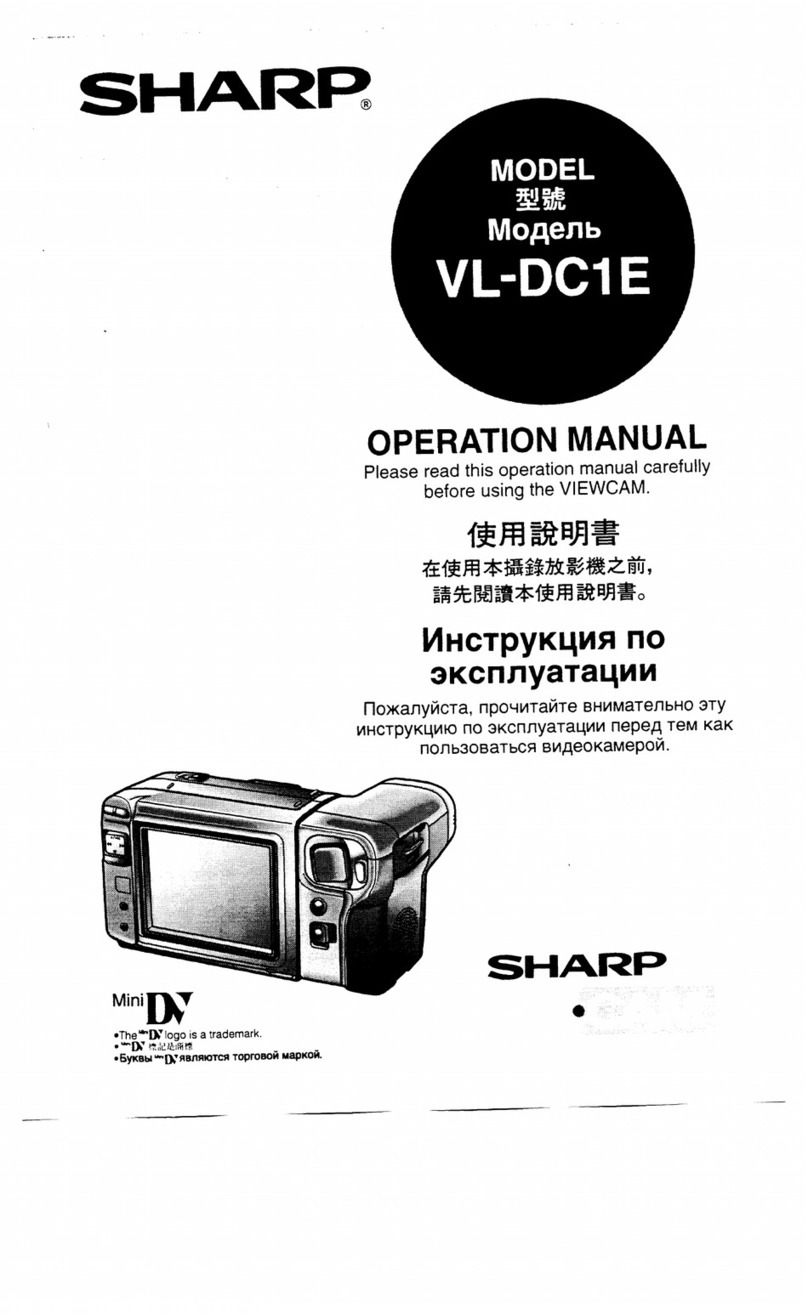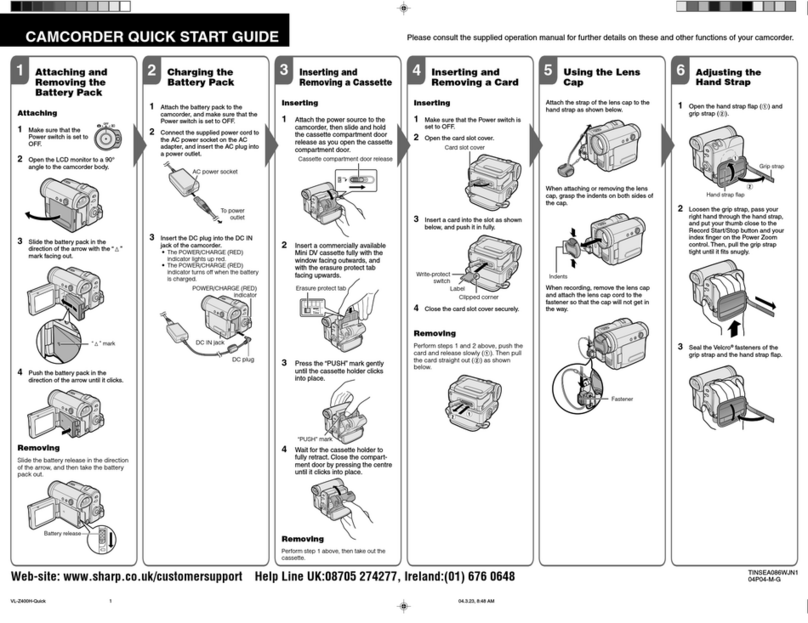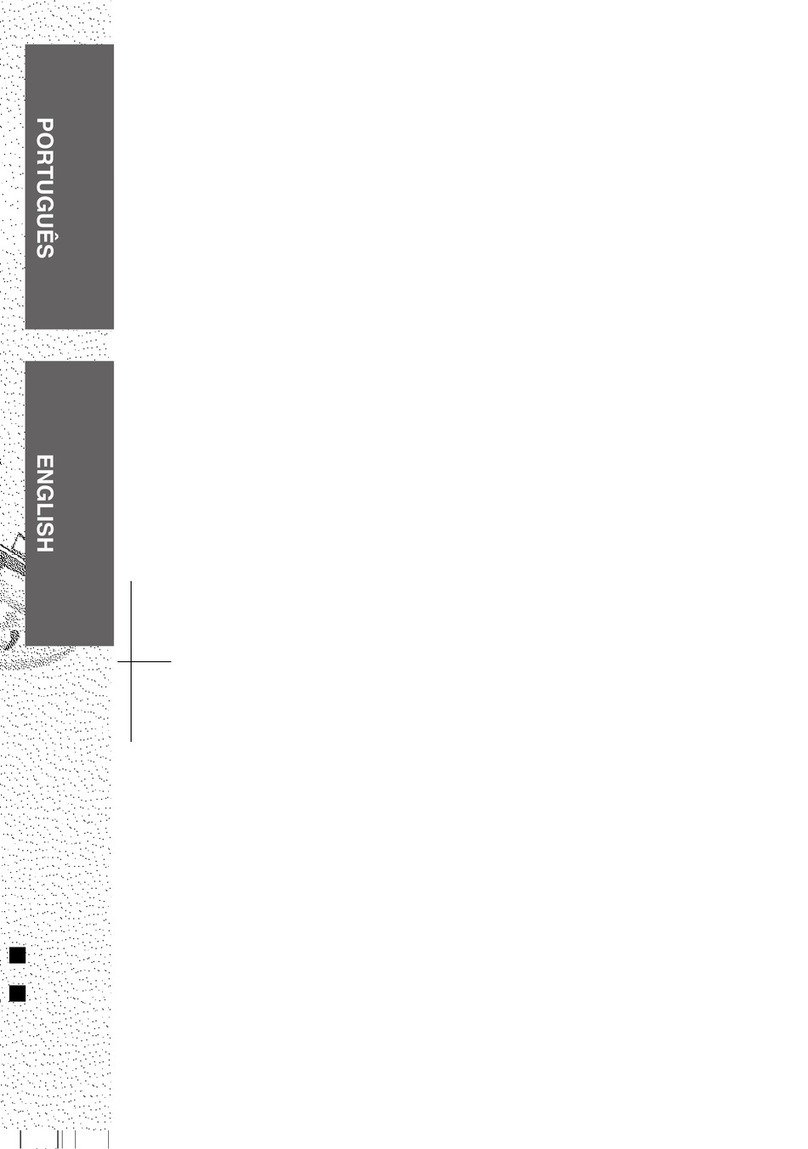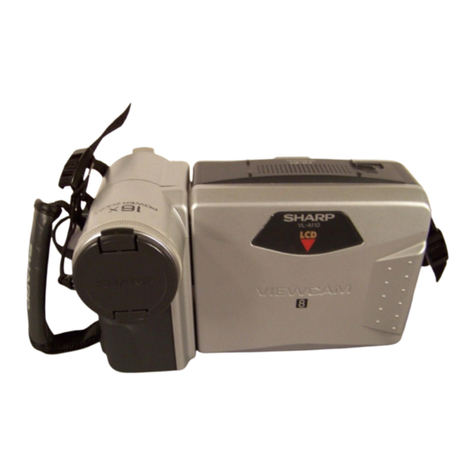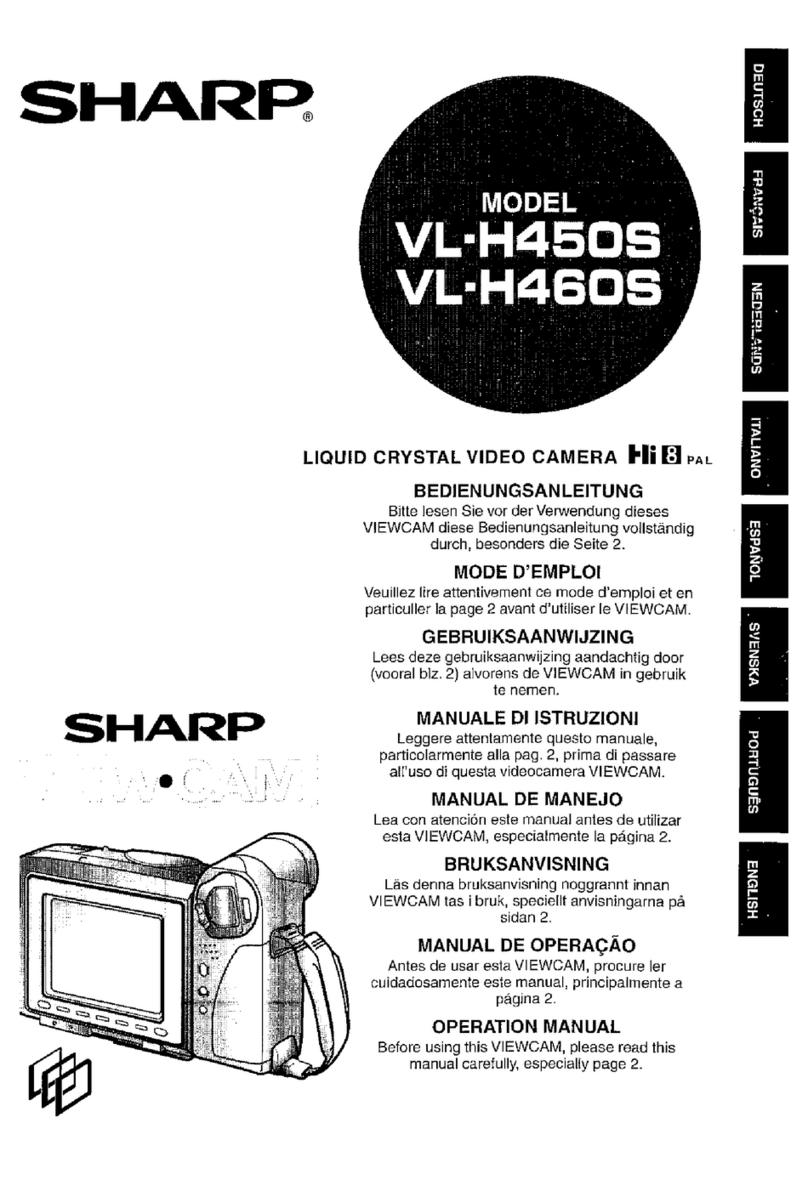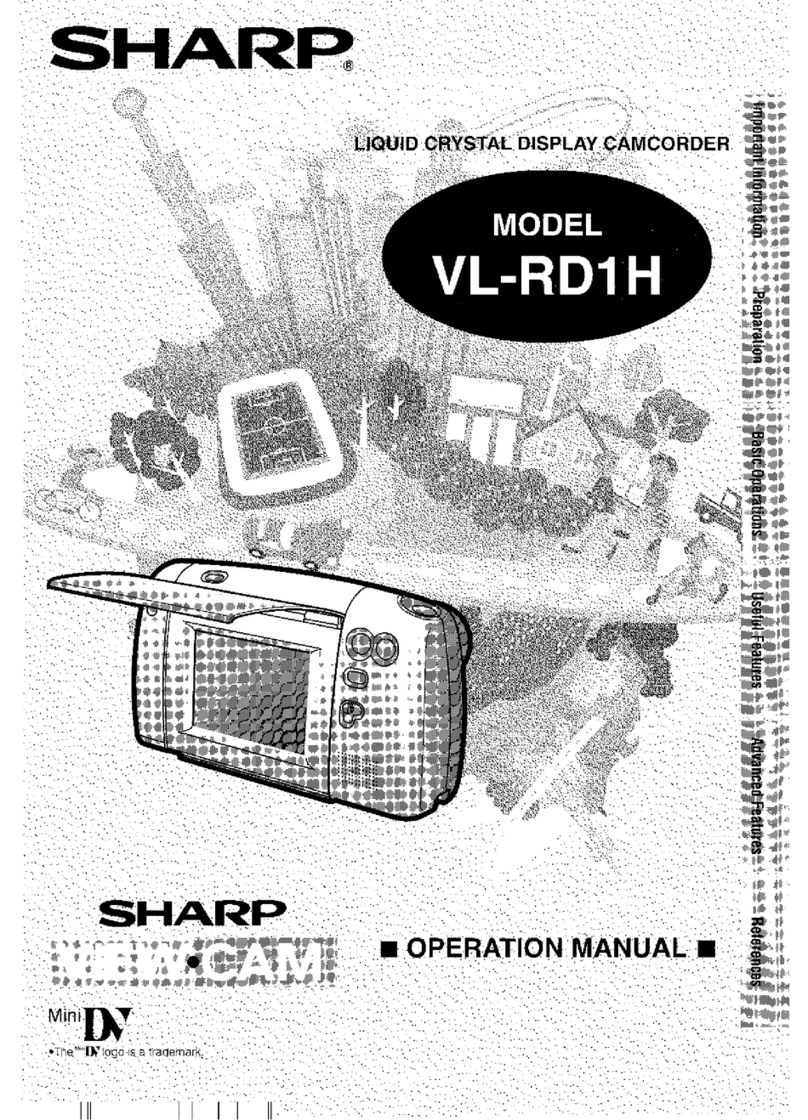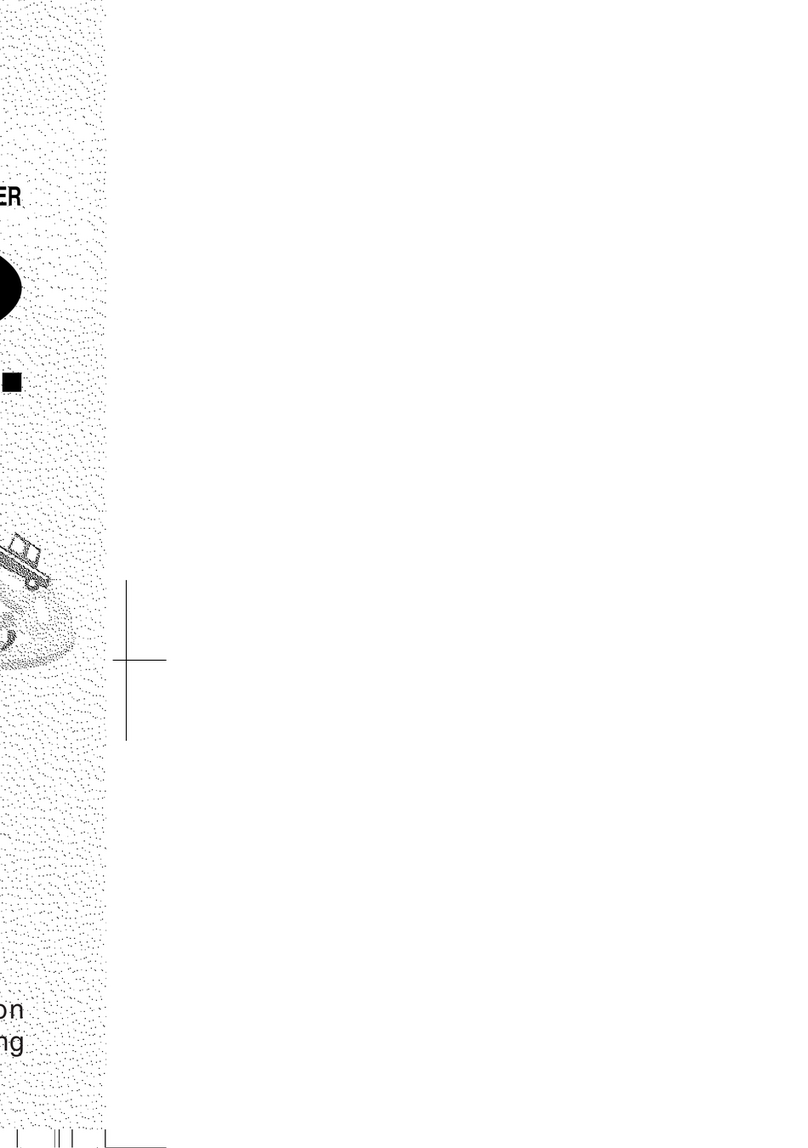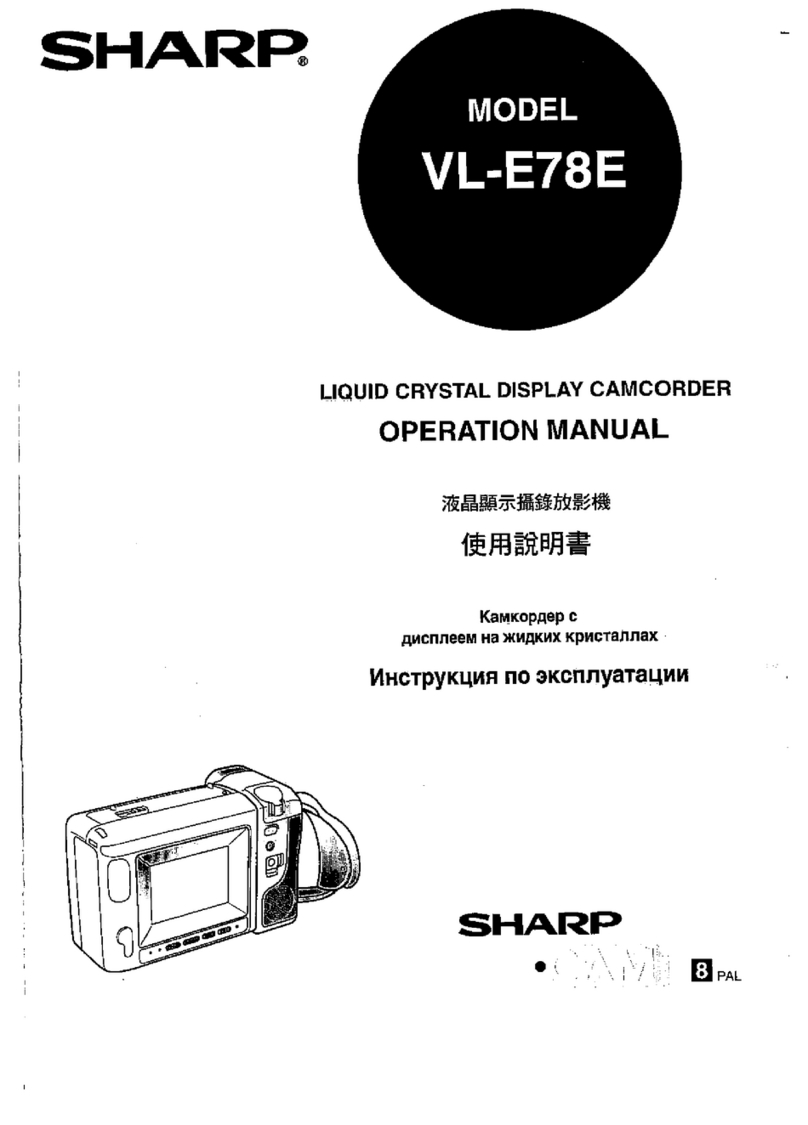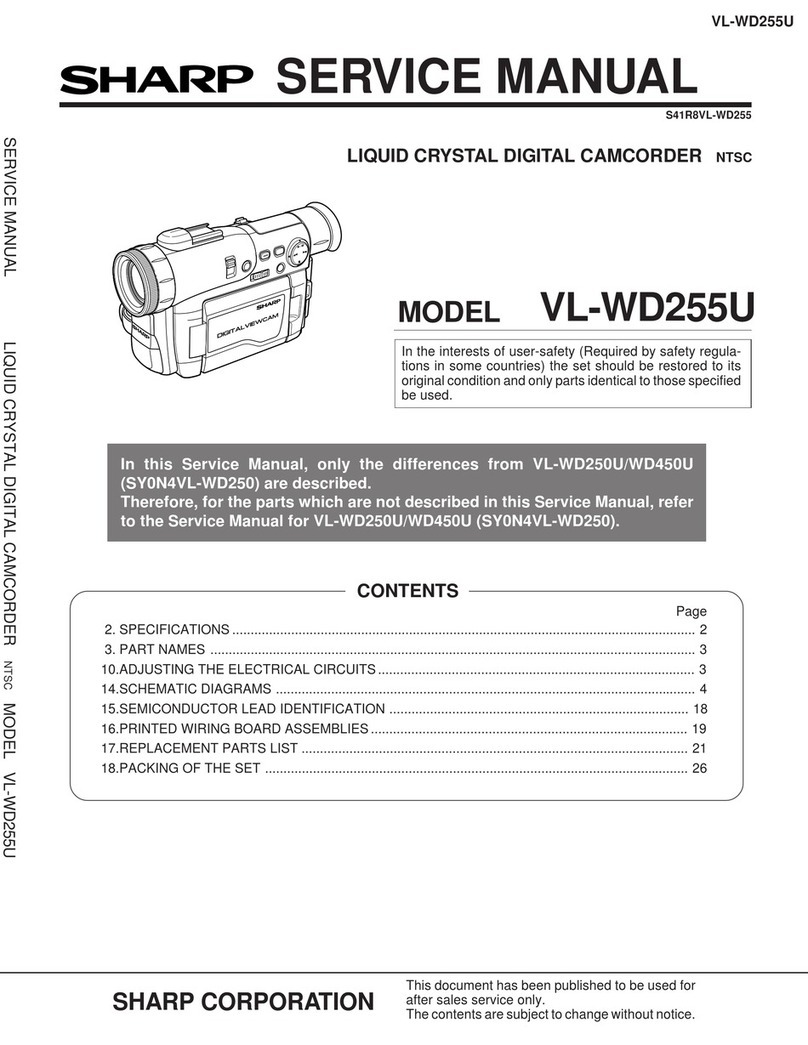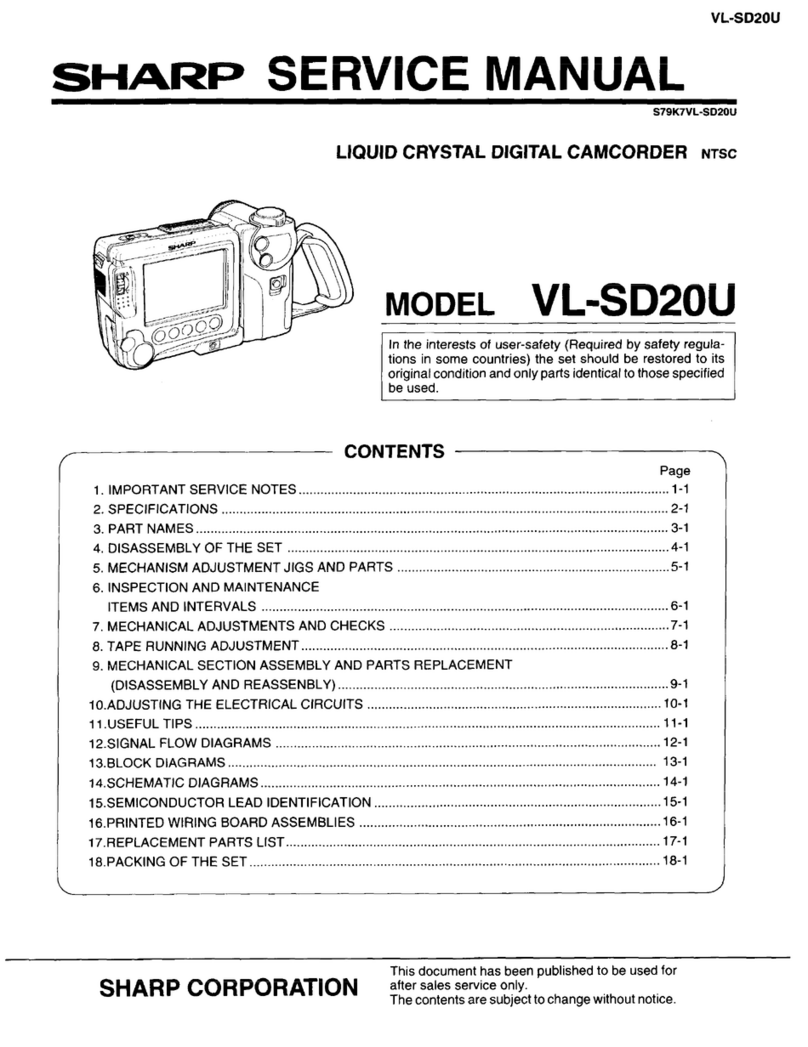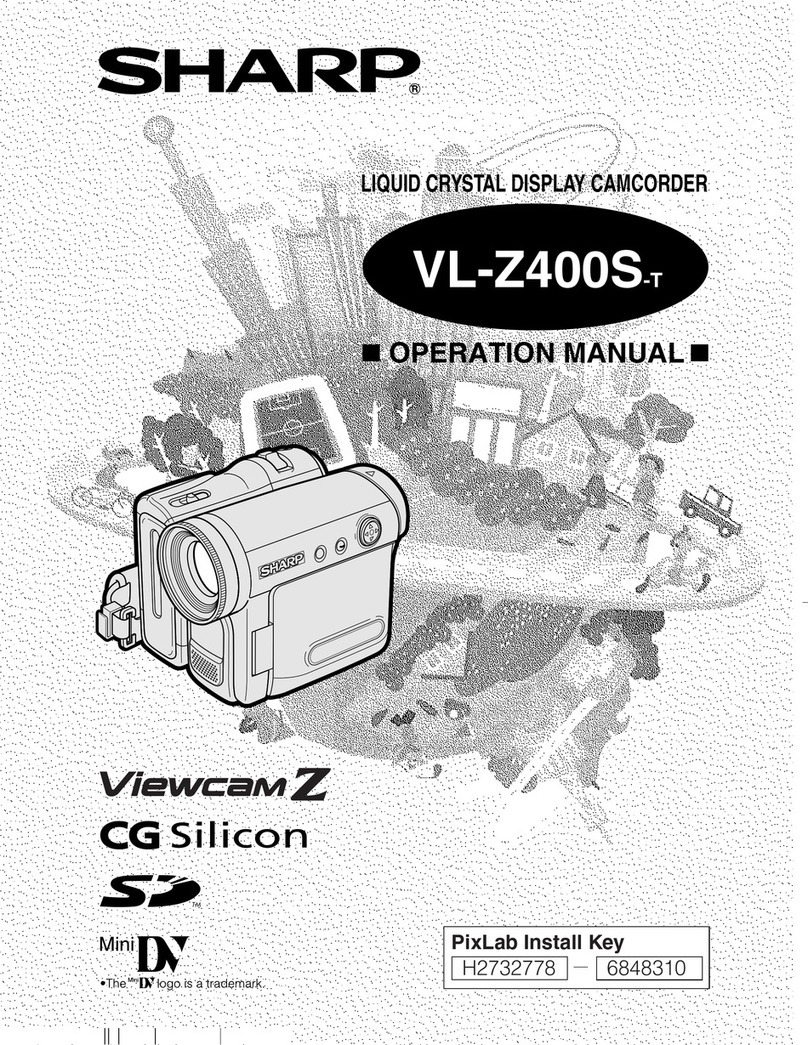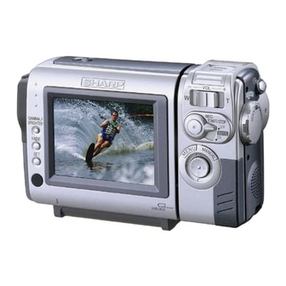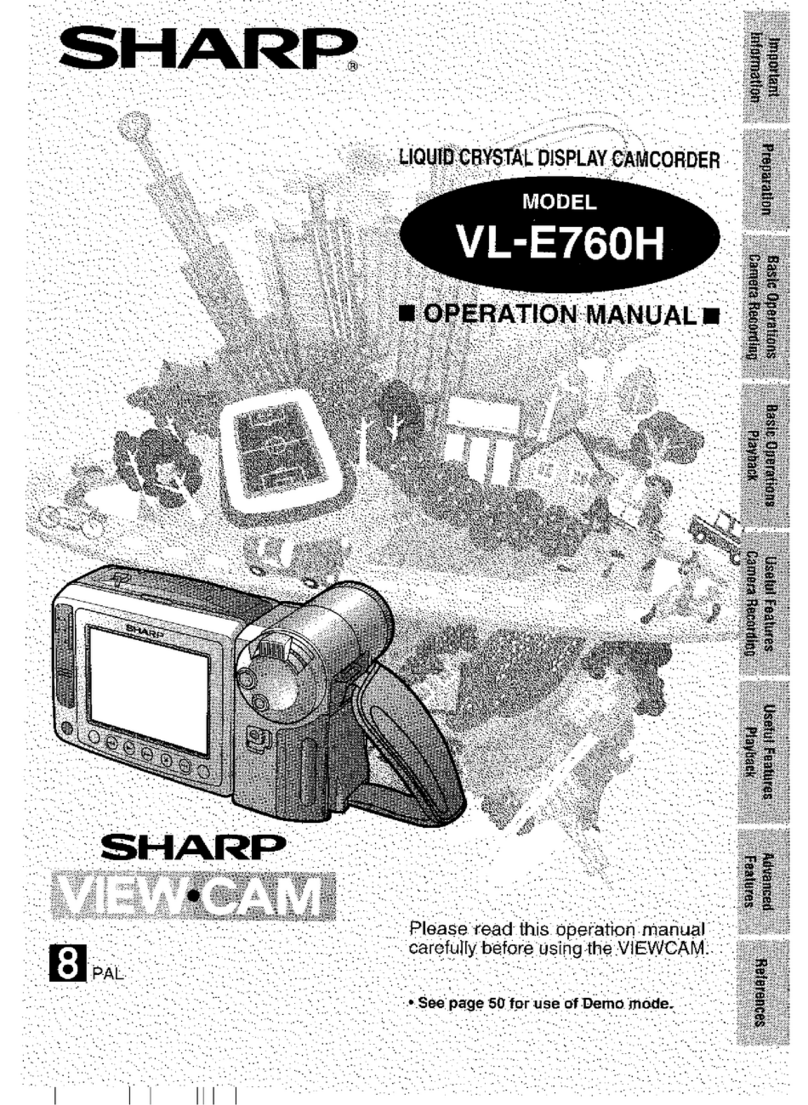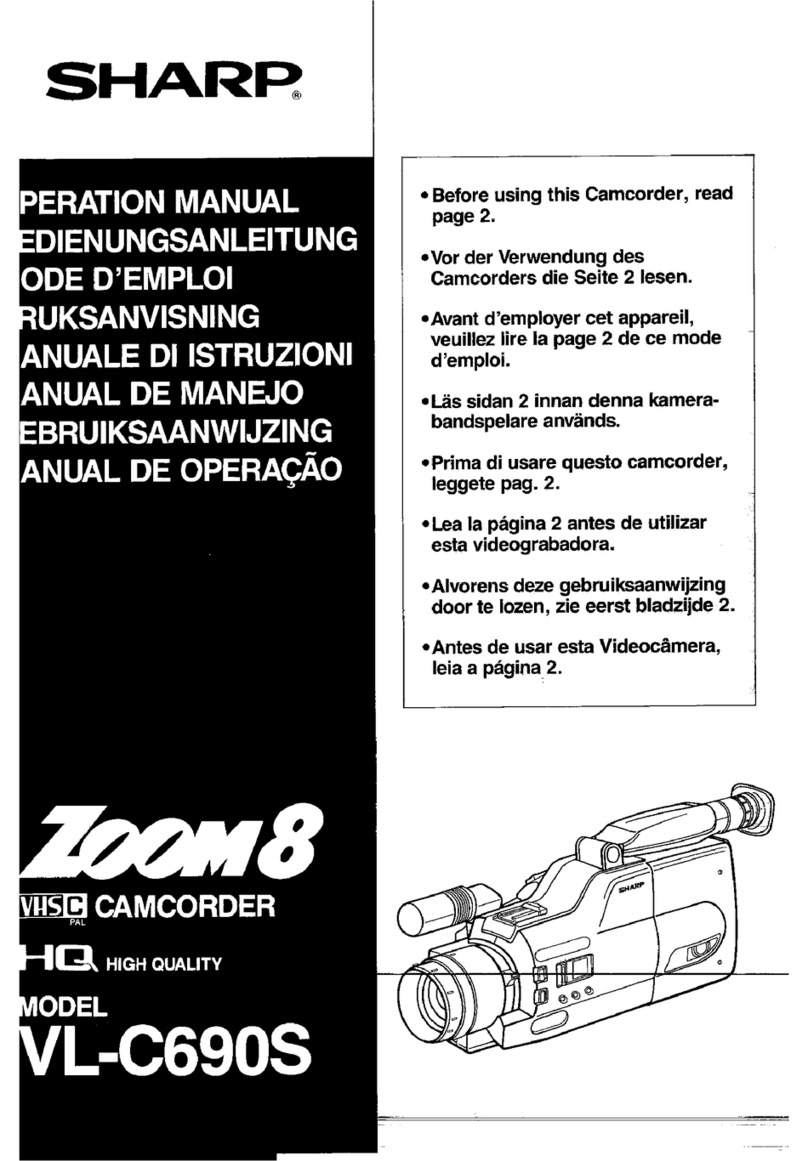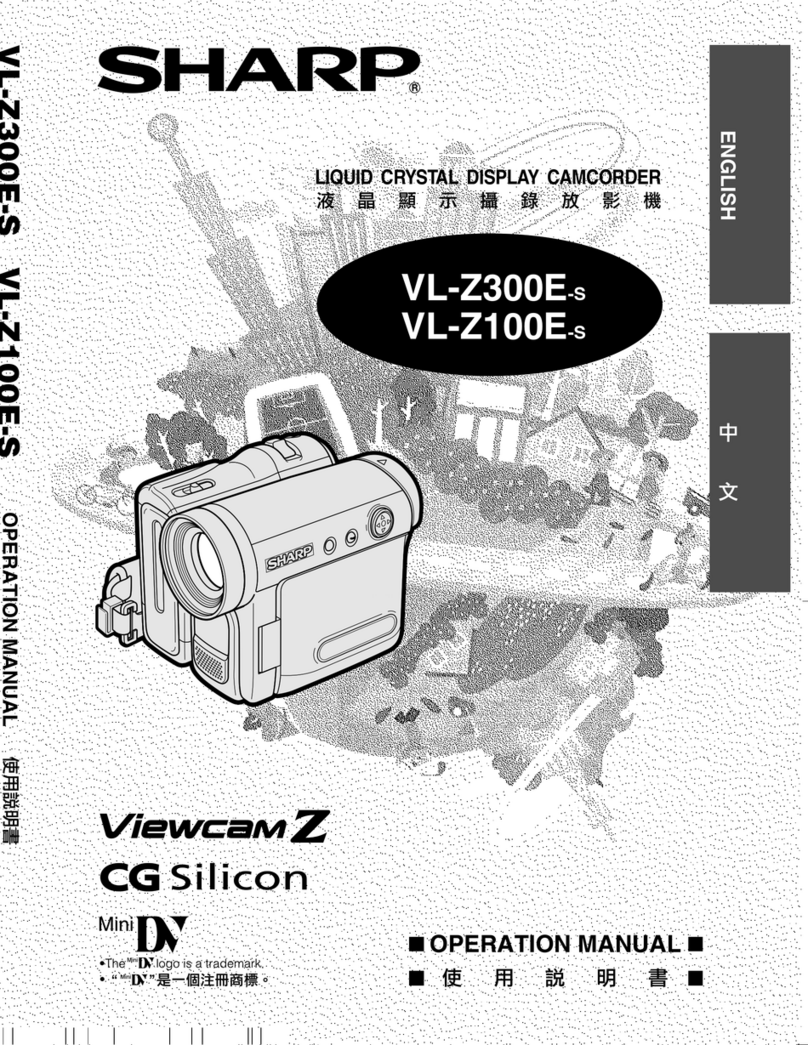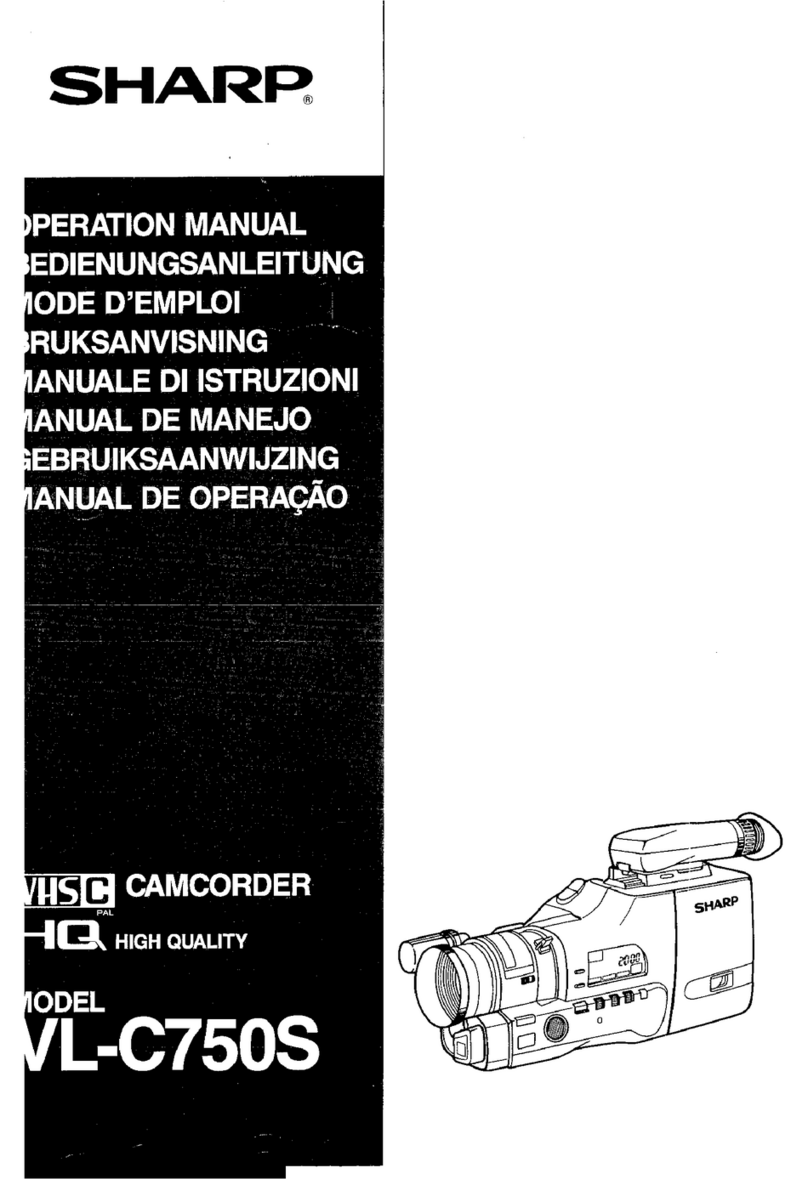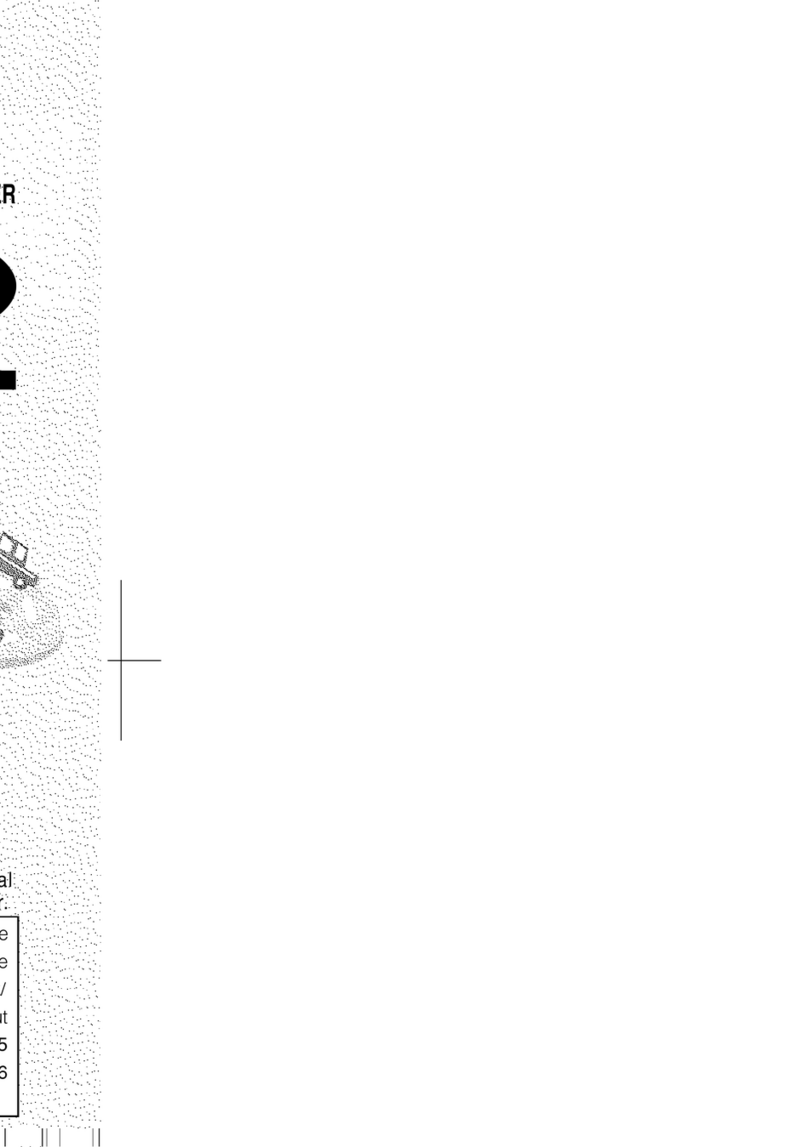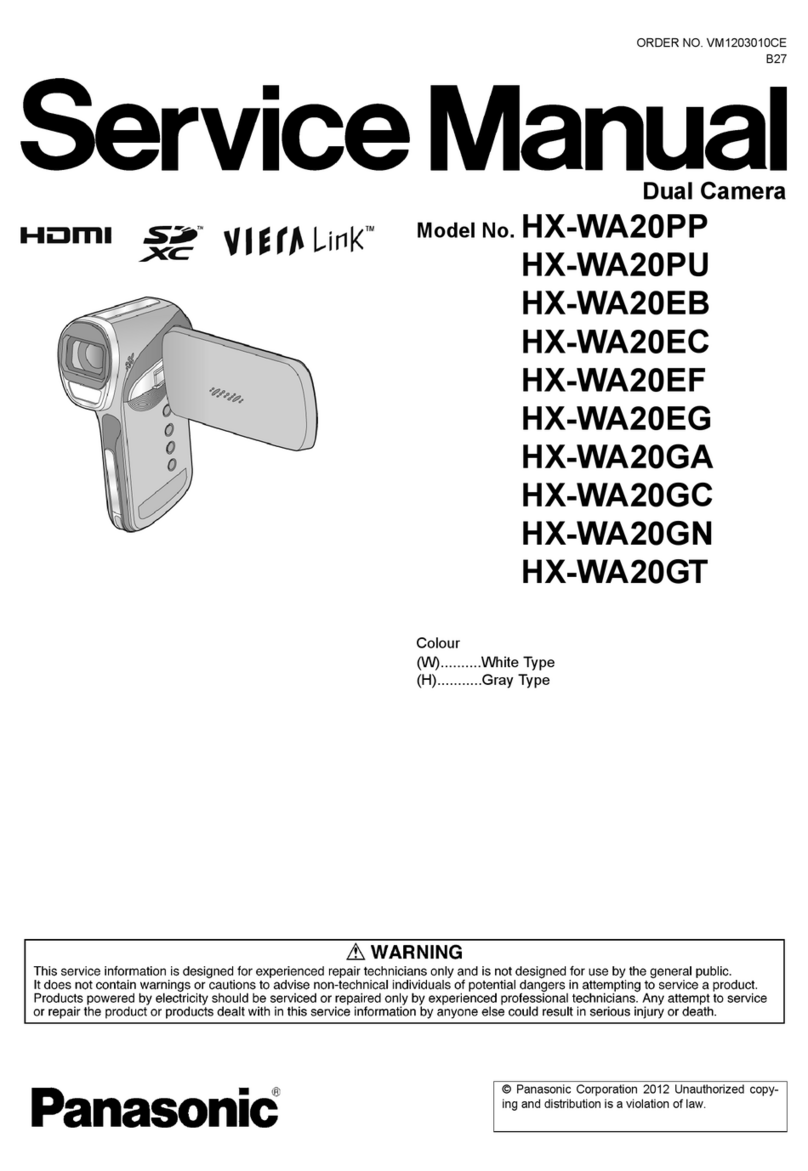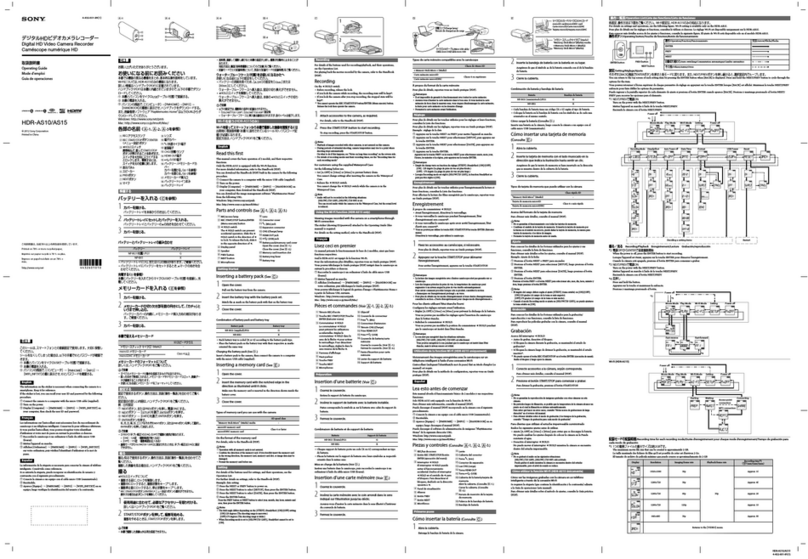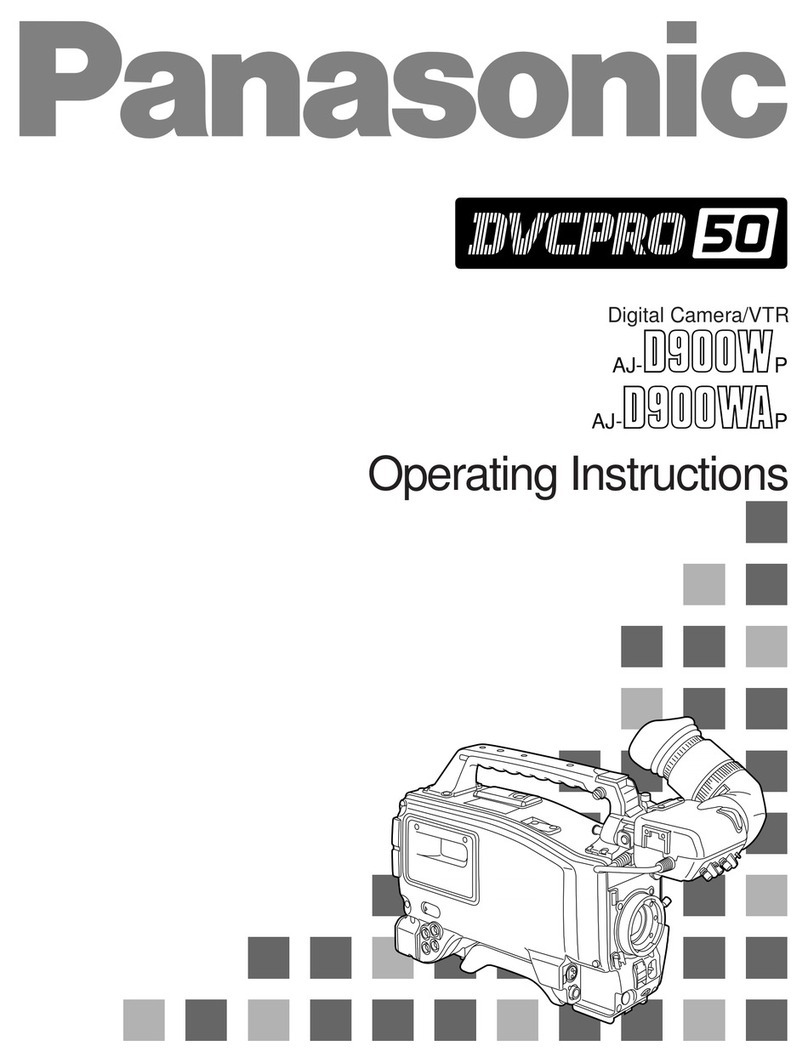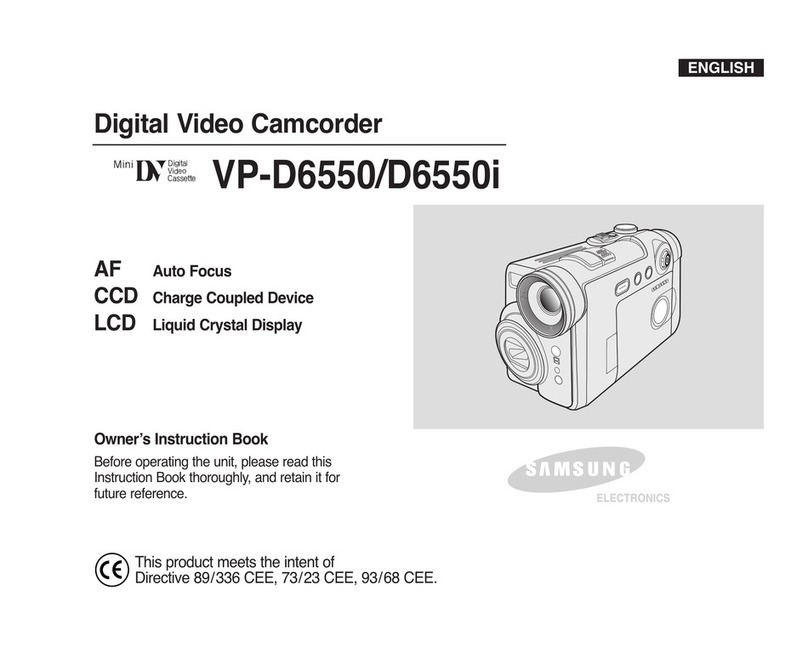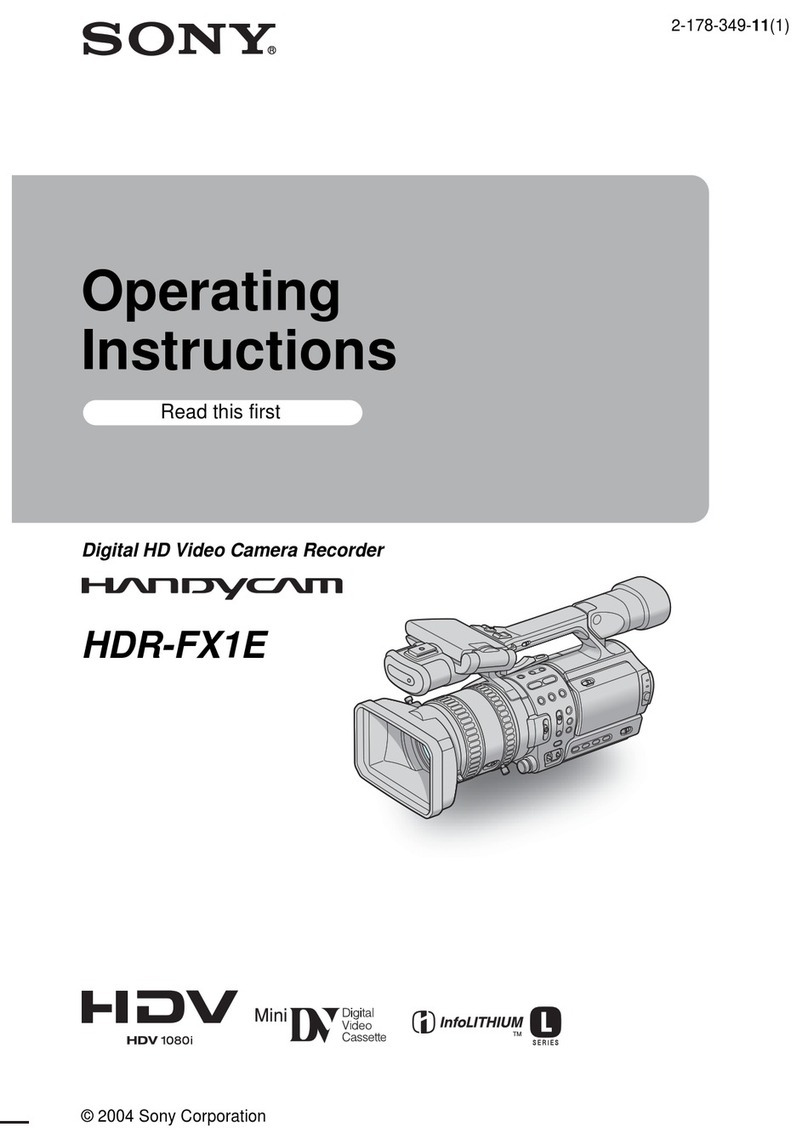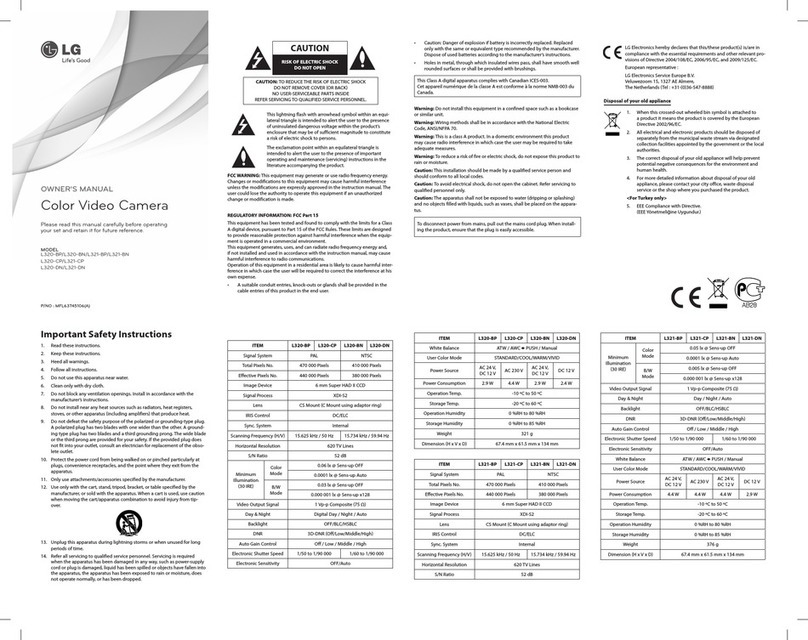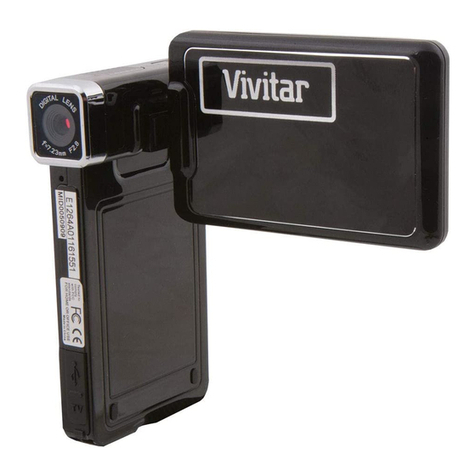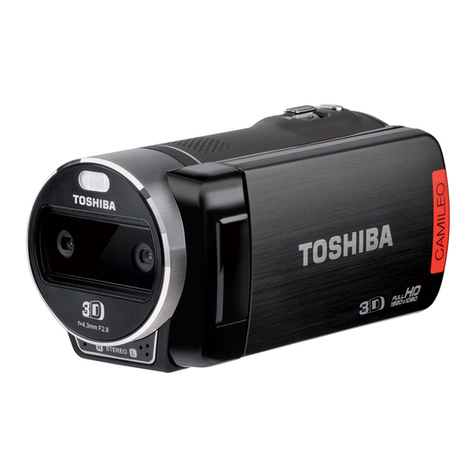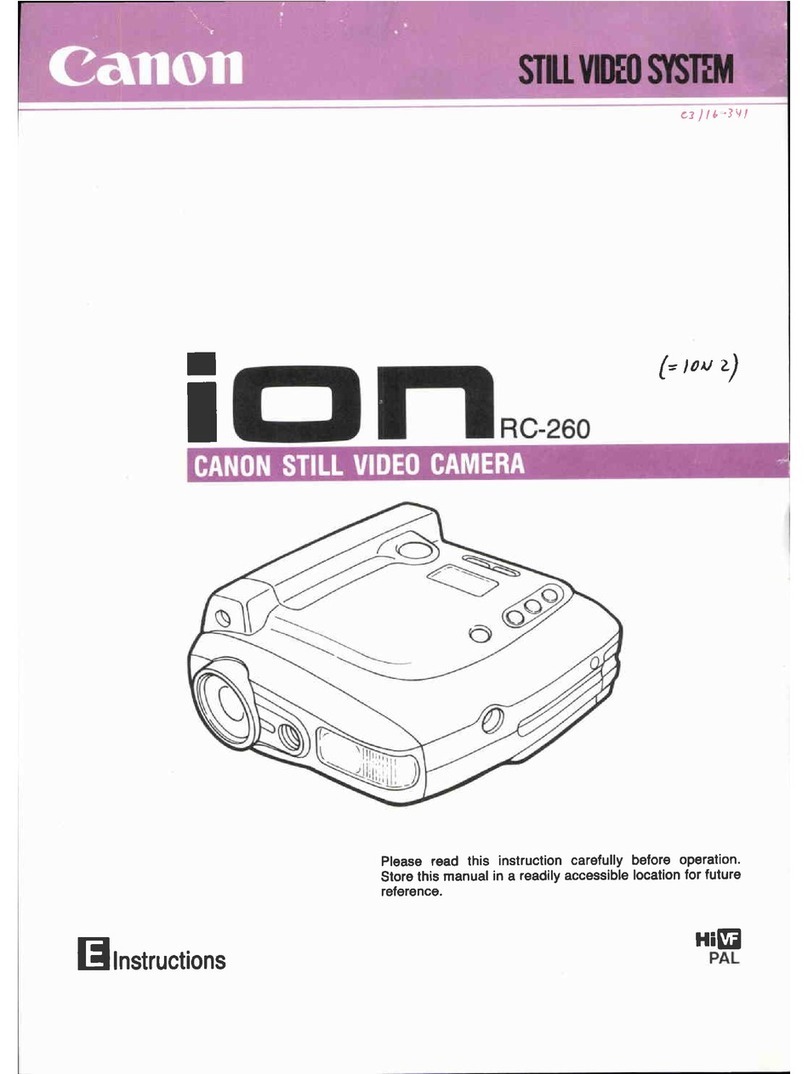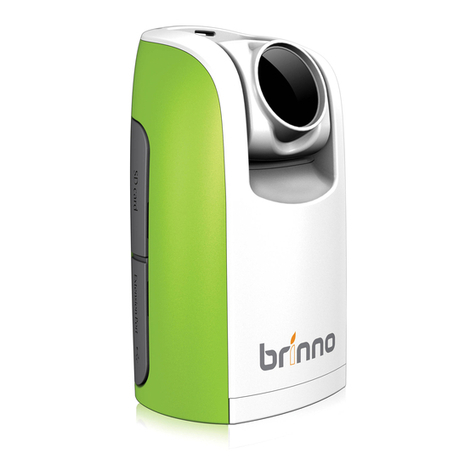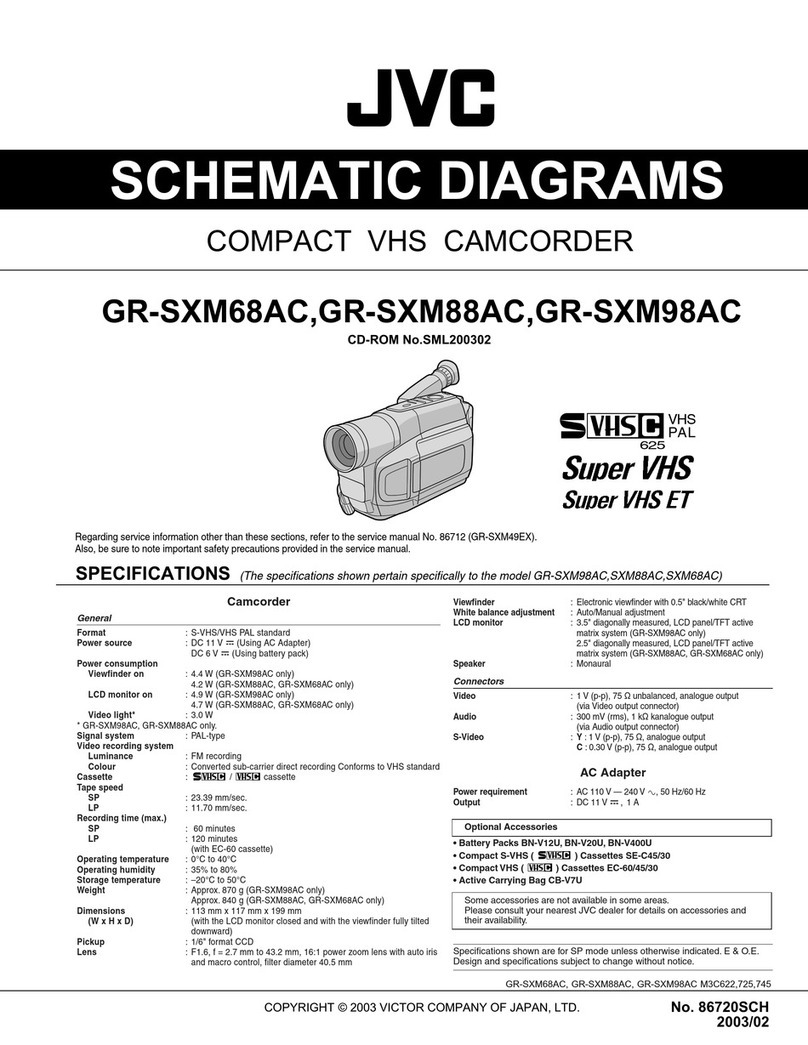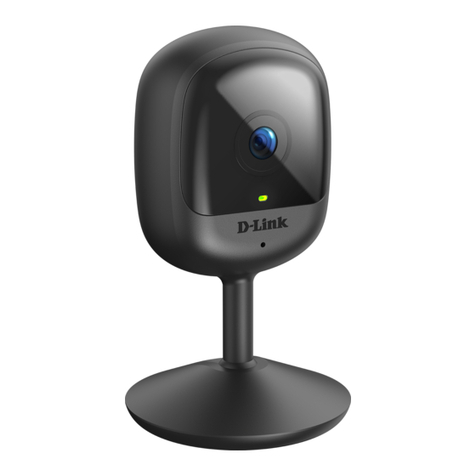VL-RDI U
1. IMPORTANT SERVICE NOTES
BEFORE RETURNING THE VIDEO CAMERA
RECORDER
Before returning the video camera recorder to the user,
perform the following safety checks.
1. Inspect all lead dress to make certain that leads are
not pinched or that hardware is not lodged between
the chassis and other metal parts in the video camera
recorder.
2. Inspect all protective devices such as non-metallic
control knobs, insulating materials, cabinet backs,
adjustment and compartment covers or shields, isola-
tion resistor/capacitor networks, mechanical insula-
tors etc.
connections, metal cabinet, screw heads, knobs and
control shafts, etc.) and measure the AC voltage drop
across the resistor. Reverse the AC plug (a non
polarized adaptor plug must be used but only for the
purpose of completing these checks) on the set and
repeat the AC voltage measurements for each ex-
posed metallic part. Any reading of 0.45V rms (this
corresponds to 0.3mA rms AC.) or more is excessive
and indicates a potential shock hazard which must be
corrected before returning the video camera recorder
to the user.
3. To be sure that no shock hazard exists, check for
leakage current in the following manner.
l Plug the AC line cord directly into a 120 volt AC outlet
(Do not use an isolation transformer for this test).
. Using two clip leads, connect a 1.5k ohm, 10 watt
resistor paralleled by a 0.151_1Fcapacitor in series with
ali exposed metal cabinet parts and a known ground,
such as a water pipe or conduit.
VTVM
0 AC SCALE 0 \
’ -5g000Gms
. UseaVTVMorVOMwithlOOOohmpervolt,orhigher
sensitivity or measure the AC voltage drop across the
resistor (See Diagram).
l Move the resistor connection to all exposed metal
parts having a return path to the chassis (antenna METAL PARTS
1. NOTES DE SERVICE IMPORTANTES
AVANT DE RENDRE LE MAGNETOSCOPE retour au chassis (connexions d’antenne, coff ret
m&allique, t&es devis, boutons etarbres decommande,
Avant de rendre le magnetoscope a I’utilisateur, effectuer etc.)et mesurer lachutedetension CAentre laresistance.
les verifications de securite suivantes. lnverserlaficheCA(uneficheintermediairenonpolarisee
doit etre utilisee aseule fin de faire ces verifications.) sur
1. Verifier toutes les gaines de fil pour etre sijr que les fils I’appareil et &peter les mesures de tension CA pour
ne sont pas pin&s ou que le materiel n’est pas coin& chaque piece metallique exposee. Toute lecture de
entre le chassis et les autres pieces metalliques dans le 0,45 V rms (ceci correspond a 0,3 mA rms CA) ou plus
magnetoscope. est excessive et signale un danger de choc qui doit etre
2. Verifier tous les dispositifs de protection tels que les corrige avant de rendre le magnetoscope a son
boutons de commande non metalliques, les materiaux utilisateur.
d’isolement, le dos du coffret, les couvercles de
compartiment et ajustement ou les boucliers, les
reseaux de resistance / condensateur d’isolement,
les isolateurs mecaniques, etc.
3. Pour etre sur qu’il n’y aaucun risque de choc electrique,
verifier le courant de fuite de la maniere suivante. VTVM
l Brancher lecordon d’alimentation secteur directement
dans une prise de courant de 120 volts. (Ne pas oECHELiE CA 0 \
utiliser de transformateur d’isolement pour cet essai).
l Utiliser deux fils a pinces et connecter une resistance
de 10 watts I,5 kohm en parallele avec un
condensateur de 0,15 PF en serie avec des pieces du
coffret metallique exposees et une masse de terre
connue telle qu’un tuyau ou un conduit d’eau.
l Utiliser un VTVM ou VOM avec une sensibilite de
1000 ohms par volt ou plus ou mesurer la chute de
tension CA entre la resistance (voir diagramme). METALLIQUES
l Deposer la connexion de la resistance & toutes les
pieces metalliques exposees ayant un parcours de
l-l
